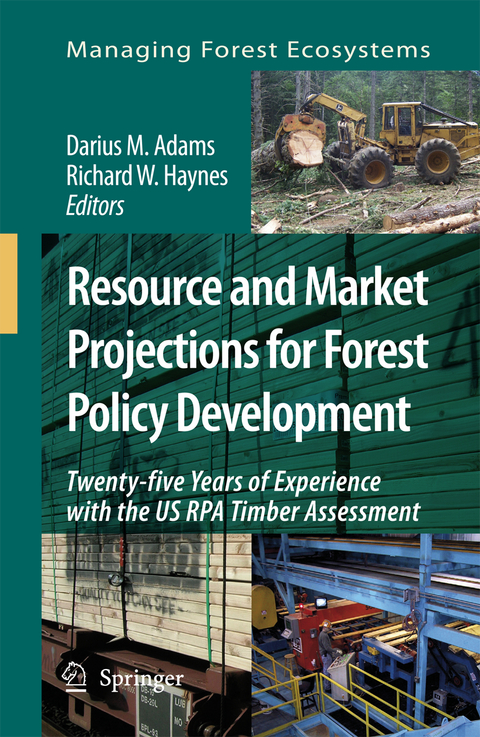
Resource and Market Projections for Forest Policy Development
Springer (Verlag)
978-90-481-7603-8 (ISBN)
Timber Assessments Supporting the Development of National Forestry Programs and Policy.- The Challenge of Developing Models to Support Forest Sector Policy Analysis.- Methodological Considerations in Developing the Timber Assessment Projection System.- Model Components.- Solid Wood—Timber Assessment Market Model (TAMM).- North American Pulp & Paper Model (NAPAP).- Methods for Projecting Areas of Private Timberland and Forest Cover Types.- Timber Inventory and Management—ATLAS.- Exogenous Assumptions—Framing the Base Case and Scenarios.- Model Solution, Validation, and Control.- Projections and Scenarios.- Base Case Projection.- Evolving Views of the Future of the US Forest Sector.- The Impact of Public Harvest in the USA on North American Timber and Product Markets.- The Role of Private Management Investment in Long-Term Supply.- Globalization and World Trade.- The Impacts of Climate Change on Forestry.- Projecting Technological Change.- Long-Term Views of the US Land Base.- Lessons Learned from 25 Years of Forest Sector Modeling.- The Utility of Forest Sector Models in Addressing Forest Policy Questions.
| Erscheint lt. Verlag | 30.11.2010 |
|---|---|
| Reihe/Serie | Managing Forest Ecosystems ; 14 |
| Zusatzinfo | XXII, 591 p. |
| Verlagsort | Dordrecht |
| Sprache | englisch |
| Maße | 155 x 235 mm |
| Themenwelt | Naturwissenschaften ► Biologie ► Ökologie / Naturschutz |
| Recht / Steuern ► EU / Internationales Recht | |
| Wirtschaft ► Betriebswirtschaft / Management | |
| Weitere Fachgebiete ► Land- / Forstwirtschaft / Fischerei | |
| ISBN-10 | 90-481-7603-4 / 9048176034 |
| ISBN-13 | 978-90-481-7603-8 / 9789048176038 |
| Zustand | Neuware |
| Haben Sie eine Frage zum Produkt? |
aus dem Bereich


